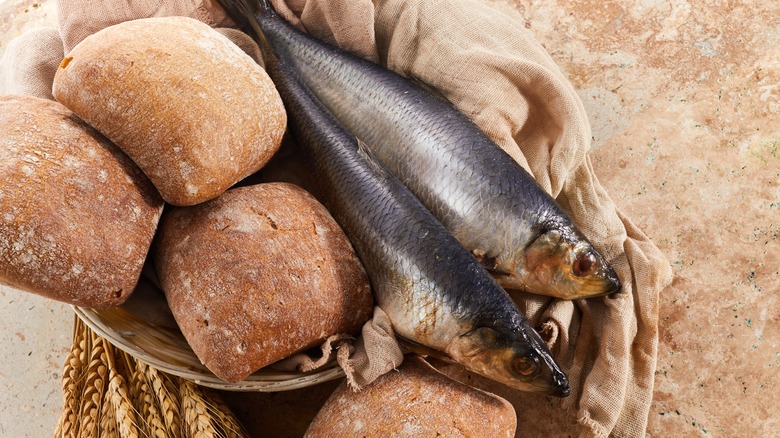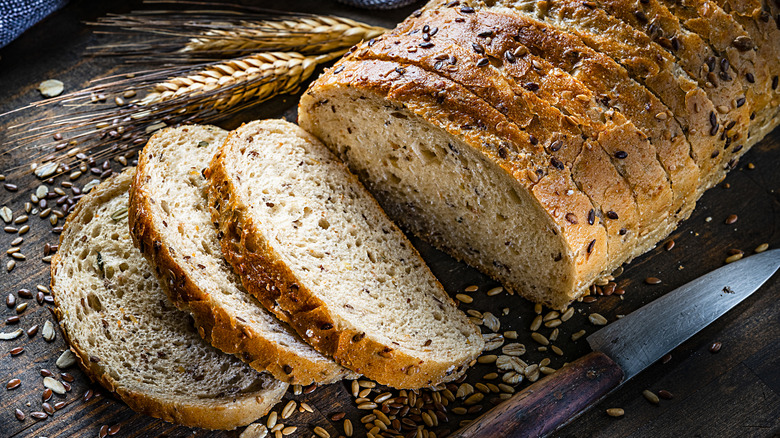Why Bread-Eating Etiquette Will Always Matter
While many of us start digging into Red Lobster's Cheddar Bay biscuits as soon as they reach the table, etiquette experts point out that there are a number of guidelines to follow when you're at a formal dinner table. This includes the only acceptable way to eat bread: Putting butter on the edge of your plate, then using your fingers to tear off bite-sized pieces of bread. Butter each piece right before eating, and you can avoid making a buttery, crumbly mess. But do such rules really still apply in our 21st-century world?
Daily Meal reached out to Nikesha Tannehill Tyson, an etiquette consultant with the Swann School of Protocol in Shreveport, Louisiana. As the author of "Going Public: Culture, Custom, and Class for Social Success," she's very familiar with not only today's etiquette, but the history of why some practices became rules that continue to persist — and whether or not we should still follow them.
As Tyson explained to Daily Meal, "Yes, etiquette rules still hold true. Practicing good table manners and being able to navigate a meal with class and decorum sets you apart, showing both civility and poise." And while bread might seem like a fairly minor part of a meal, Tyson added, "The art of breaking bread has both biblical as well as different cultural and historical origins." This places it at the center of etiquette rules that have endured across centuries.
Guidelines for how to consume bread date back thousands of years
Nikesha Tannehill Tyson told us that in her research into bread etiquette's history, she found herself going back a long, long way. "In terms of history and culture regarding bread, it takes a really deep dive and quite a bit of research," she shared. "As I researched, I discovered that bread has been a staple and a symbolic food in many cultures."
Consider this: In Arabic, the words for "bread" and "life" share the same root word: esh. Etiquette explaining the correct way to eat bread can be found in multiple religious texts, and Tyson confirmed that these texts were the beginning of it all: "The custom of breaking bread — in all of my research — dates back to the Bible," she explained.
Bread is a very important part of life throughout the Bible: The 6th-century B.C. prophet Ezechiel gave instructions for making bread; bread also fed the people of Moses, and Jesus used it to feed many. In everyday life, bread came to symbolize generosity and nourishment, and interestingly, that importance crosses cultures and continents. An early version of today's etiquette rules can be seen in ancient Arabic practices: Much like we're told to break off a piece of bread before buttering and eating it, ancient people often broke off pieces of bread to use as edible utensils, neatly scooping up bite-sized portions of everything from meats to soups to stews.
Bread-breaking etiquette will likely stick around
Bread-breaking etiquette doesn't seem like it's going away anytime soon. Nikesha Tannehill Tyson told us that it's persisted in various forms throughout history and across different cultures: "Several cultures seem to break bread into pieces," she said, adding, "One article shared that it is considered bad luck to cut bread with a knife."
Tyson explained that this etiquette's importance persisted into modern history. "George Washington wrote an etiquette book, which shared rules for bread. Etiquette books were written during the Civil War era on how to handle bread," she said. These provide a fascinating glimpse into how some basic rules tie us all together.
Wondering what Washington had to say about bread? He was a teenager when he copied the "110 Rules of Civility," and the exercise is thought to have had a profound impact on his views of character and proper behavior. There were three rules dedicated to bread: It should be cut with a non-greasy knife, there should be no leaning on the table, and bread that's soaked in sauce should be small enough to eat in one bite. Bread, it seems, will likely continue holding a special place on tables around the world, whether it's shared with the sincere tradition of Amish friendship bread or with the fun spirit of sharing that comes with a pull-apart pumpkin caramel bread.


